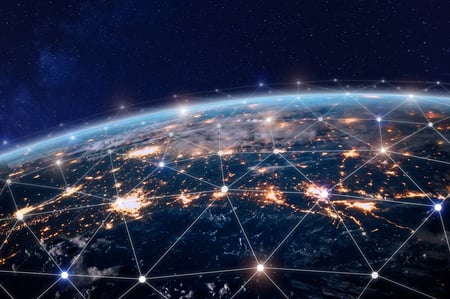 If it feels like you hear about a new natural disaster every time you open your phone or turn on the news, there’s a good reason for that: the country has been dealing with an uptick in all manner of natural disasters: from wildfires to hurricanes to floods to tornados to earthquakes.
If it feels like you hear about a new natural disaster every time you open your phone or turn on the news, there’s a good reason for that: the country has been dealing with an uptick in all manner of natural disasters: from wildfires to hurricanes to floods to tornados to earthquakes.
If you’re a business that can’t go down, you know just how disruptive and destructive a natural disaster can be -- and that’s even before accounting for ways that an ongoing pandemic might compound that disruption and destruction.
For businesses that can’t afford to lose critical power, it’s crucial that you ensure that your business can stay up no matter what nature throws your way. Planning and forethought can go a long way in ensuring that your power doesn’t fail in a natural disaster.
Here are 7 things you can do to protect your power system and ensure you have power when you need it.
1. Design An Agile System
Being prepared for any kind of disaster starts with the design of the system itself. When it comes to protecting your power system and ensuring you never go down, your system design is a crucial and often underestimated element. Despite the many companies that have struggled, faltered, and shuttered in the face of the pandemic, a few companies have actually thrived--and a primary reason is their flexible, safe, and sustainable power systems and supply chains.
2. Prioritize Maintenance
It’s hard to overstate the importance of prioritizing ongoing, preventative maintenance. Staying on top of maintenance is probably the most important tool you have available to protect your critical power systems.
The most effective preventative maintenance entails:
-
Performing routine inspections
-
Following manufacturer and industry standard recommendations for maintenance and support
-
Employing monitoring systems to drive predictive vs reactive maintenance
-
Scheduling tests of primary and backup power systems
3. Benchmarking
If you’re performing the kind of ongoing preventive maintenance that you should be, that should mean that you’re utilizing benchmarking. There are a variety of tests you likely perform during scheduled maintenance tests and inspections. These tests provide you with valuable data. Instead of simply marking off each test or portion as a pass or a fail, instead, write down or electronically record and then track and trend the actual results of each test. When it comes to predicting, preventing, or quickly repairing problems, having a database of data points you’ve tracked over time is infinitely more useful to you than “pass/fail.”
4. End-to-End Testing
When you test, look at the entire system: not just solitary components. Testing a single component, typically done with predefined vendor procedures, provides you with some information -- but it doesn’t give you the whole picture. Instead, your maintenance and testing focus should be end-to-end, allowing you to ensure that all components are working properly not just individually, but as a complete system.
5. Thorough Documentation
Make sure that you are documenting everything. That can mean all of the benchmarking data points you gather from testing, but it also means ensuring that you’ve written out comprehensive contingency and resiliency plans. And if you have contingency plans written out, now is the time to revisit and update them. Prior to this year, many companies had a natural disaster contingency and resiliency plan on file, but they had no plans in place for a massive, global pandemic. As a result, they were left completely unprepared when COVID-19 hit. Make sure that your contingency and resiliency plans cover more than the disasters you expect; have a plan in place that ensures you stay up even in the face of unlikely or unexpected disasters, too.
6. Utilize Remote Services
One of the few good things resulting from the pandemic is the fact that many companies are now becoming more comfortable with utilizing remote services. Remote services provide a number of benefits: one of the primary ones is that remote services can keep things up and running even if staff need to evacuate. It can also provide a way to monitor damage and give you a jump on preparing a plan of action.
7. Use Trustworthy Vendors
Don’t wait until the natural disaster or pandemic to ensure that every vendor you work with meets your expectations of quality and is familiar with all of the local codes and requirements you need to meet. Choosing a partner without the necessary experience or expertise is always a gamble, but it’s a risk that companies sometimes are willing to take because it saves them money in the short-term. This is a risky choice even during the normal course of operations. But when you add in a natural disaster, pandemic, or any other unexpected situation, the problems that can arise from vendors lacking the ideal experience or expertise can -- and almost always will -- compound in ways that can be genuinely catastrophic. It’s wiser (and cheaper!) in the long run to plan and pay for quality critical power supplier relationships now.
There are steps you can take right now to make sure that you’re prepared for the next natural disaster or pandemic. If you can’t afford for your company to have downtime, ensure you have a strong critical power system in place right now, before anything new goes wrong.



